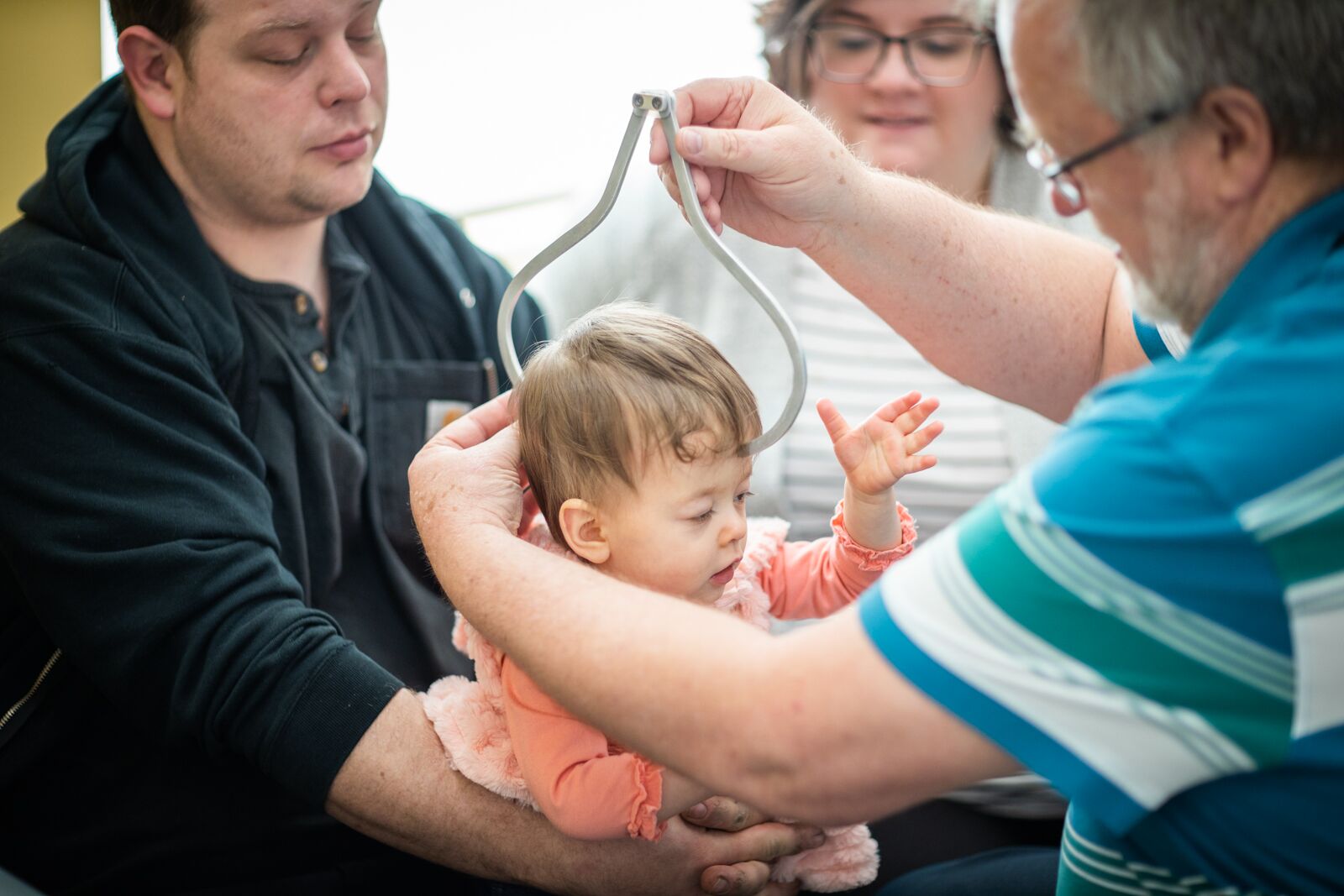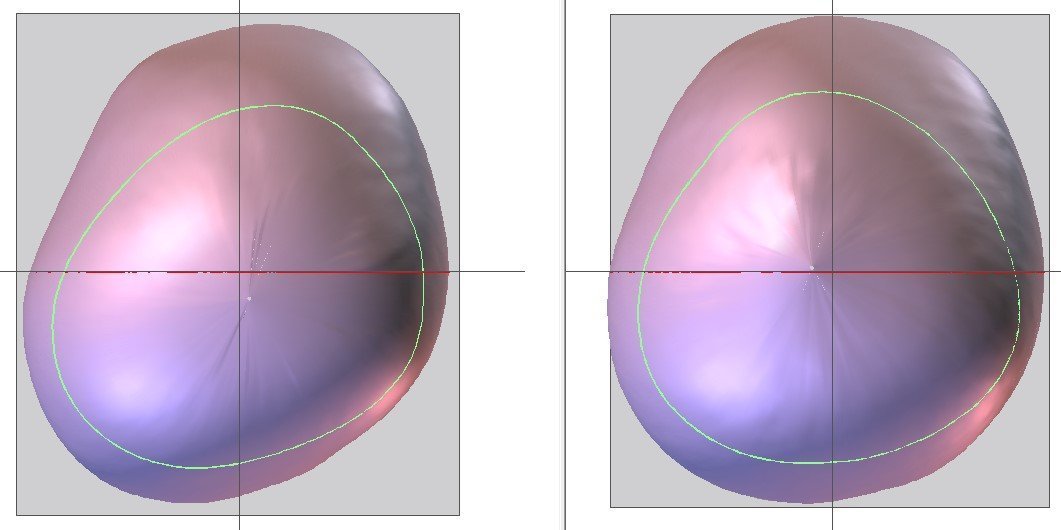
Treating flat head syndrome with a helmet
You’ve probably noticed a baby wearing a helmet at some point in your life. There are a variety of reasons for this, but the most common is to correct a misshapen head. The condition is known as flat head syndrome or plagiocephaly. While it isn’t rare, most people know very little about it.
Hamilton Health Sciences’ Prosthetics & Orthotics Program is one of Canada’s largest providers of treatment for this condition. This team creates custom helmets to help remold the skill skull when it has grown unevenly. Certified Orthotist, Michael Hall, specializes in assessing and correcting plagiocephaly. He shares answers to some of the most common questions he receives.
What causes babies to develop a flat spot on their heads?
We started to notice an increase in flat spots on infants’ heads in the early 90s when the “Back to Sleep” program was first introduced. It encourages parents to have their children sleep on their backs on a very firm mattress to help reduce the risk of SIDS (sudden infant death syndrome). Infants’ heads are still very soft and easily influenced by prolonged pressure in one area. Back sleeping has contributed to some of the misshapen heads that we are seeing. Some babies don’t adjust their position during sleep, and the part of their head that’s in contact with the mattress becomes flattened.
A what point might child need a helmet?
Infants who have developed a significantly misshapen head may benefit from the use of a helmet to correct the shape.
Infants with a very mild to moderate misshape can benefit from conservative treatments like repositioning of the head from left to right during sleep, using a repositioning pillow, and increasing tummy time. If your infant has moderate to severe misshape, you should consider possible treatment with a helmet. Your healthcare provider can help you determine the degree of misshape your baby has developed.
How do they work?
These custom helmets are shaped to limit growth on the side of the skull that is overdeveloped and encourage growth on the side of the skull that is underdeveloped. As the brain grows, the skull will expand into the flattened areas to fill out the space in the helmet. The lining of the helmet is also designed to better distribute pressure along the bones of the skull.
When is the best time to start exploring a helmet as an option?
The best time to begin treatment with a corrective helmet is once a child has developed good head control. This normally occurs round the age of 4 months. We recommend this age because the head grows quickly between the ages of 4 months to 7 months, and this is when we see the best correction occurring with the use of a helmet.
It is always best to start asking questions early. I have sadly had to tell some families that it is too late for a helmet to reshape their child’s head because they waited too long to be referred for assessment. This is very hard news to deliver, so we recommend parents inquire with their family doctor when they start to notice a problem, and request a referral to a certified orthotist as early as possible.

What should I expect once we’ve decided to have a helmet made?
Once a decision has been made to treat with a helmet the following steps will occur:
- A scan of your child’s head shape will be captured using a special digital scanner. This is quick and absolutely painless. The scan gives us a better idea of your child’s head shape, and will be used to develop the helmet. You can even choose a custom design and colour for the helmet!
- Two weeks after the scan you’ll attend a fitting appointment. At this appointment the new helmet will be fitted to your child and you’ll receive information for how to use and care for the helmet. We will also answer any additional questions you may have.
- After a short break in-period of a couple of days the child will – wear the helmet full time. This ensures the best possible correction.
- Every two weeks, you’ll come in for a follow-up appointment to review progress. If needed, slight changes will be made to the helmet to continue reshaping the head.
- Your child will remain in treatment until the desired head shape has been achieved and there is no longer any risk of the flat spot returning, or until about twelve months of age.

Will the use of the helmet affect the brain’s neurological development in any way? Does the helmet hurt?
The helmet does not affect the brain’s neurological development in any way. The helmet does not hurt. While an infant may fuss or cry when they are first fitted with the helmet, they soon settle down and the helmet becomes familiar and more comfortable.
What happens if we don’t do the helmet?
This is always a difficult question to answer. We do have some parents who decide not to treat with a helmet, however since we never see the child again for any follow-up, it is difficult to know if the child’s head shape improved or just remained the same.
Generally, if a baby’s head is moderately to severely misshapen, a helmet is the best way to correct it.
How much does it cost for treatment? Does insurance cover this?
This treatment is not currently covered by OHIP or the Assistive Devices Program (ADP). The complete cost for the treatment, including follow-up visits is $2,888. Most insurance carriers will provide some form of coverage for this treatment. The level of coverage depends on your insurance plan.
A parent’s perspective
Parents Lyndsay and Steve started to notice a difference in their daughter Anastasia’s head shape when she was only a couple months old. They tried to correct it by repositioning her and increasing tummy time, but her head continued to grow unevenly. When she was four months old, they were referred to Prosthetics & Orthotics at Hamilton Health Sciences where Mike Hall assessed Anastasia. When he measured her head there was a 18mm difference between the right and left side.
“It was severe,” says Mike. “Anything over 15mm is considered severe and the most severely involved case we have seen was a child with a 29 mm discrepancy.”
“It’s been a really positive experience.”
Lyndsay and Steve opted to have a helmet created for Anastasia. They were pleasantly surprised by how quickly she adapted to it, and how positively strangers reacted when they saw her.
“We’ve been stopped in public by parents who are exploring it for their kids and want to know more,” says Steve.
Lyndsay chose a Harley Quinn design for Anastasia’s helmet, since she and Steve are big superhero fans. Anastasia got used to the helmet quickly, and it didn’t dampen her cheerful spirit.
“It’s been a really positive experience,” says Lyndsay. “Mike is great with her.”
Anastasia’s treatment has led to great results. After wearing her helmet for six months, her head shape corrected by 13mm.
Before and after
The scan on the left was taken at the start of Anastasia’s treatment, and the one on the right was taken when it was complete.

